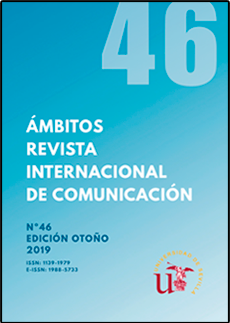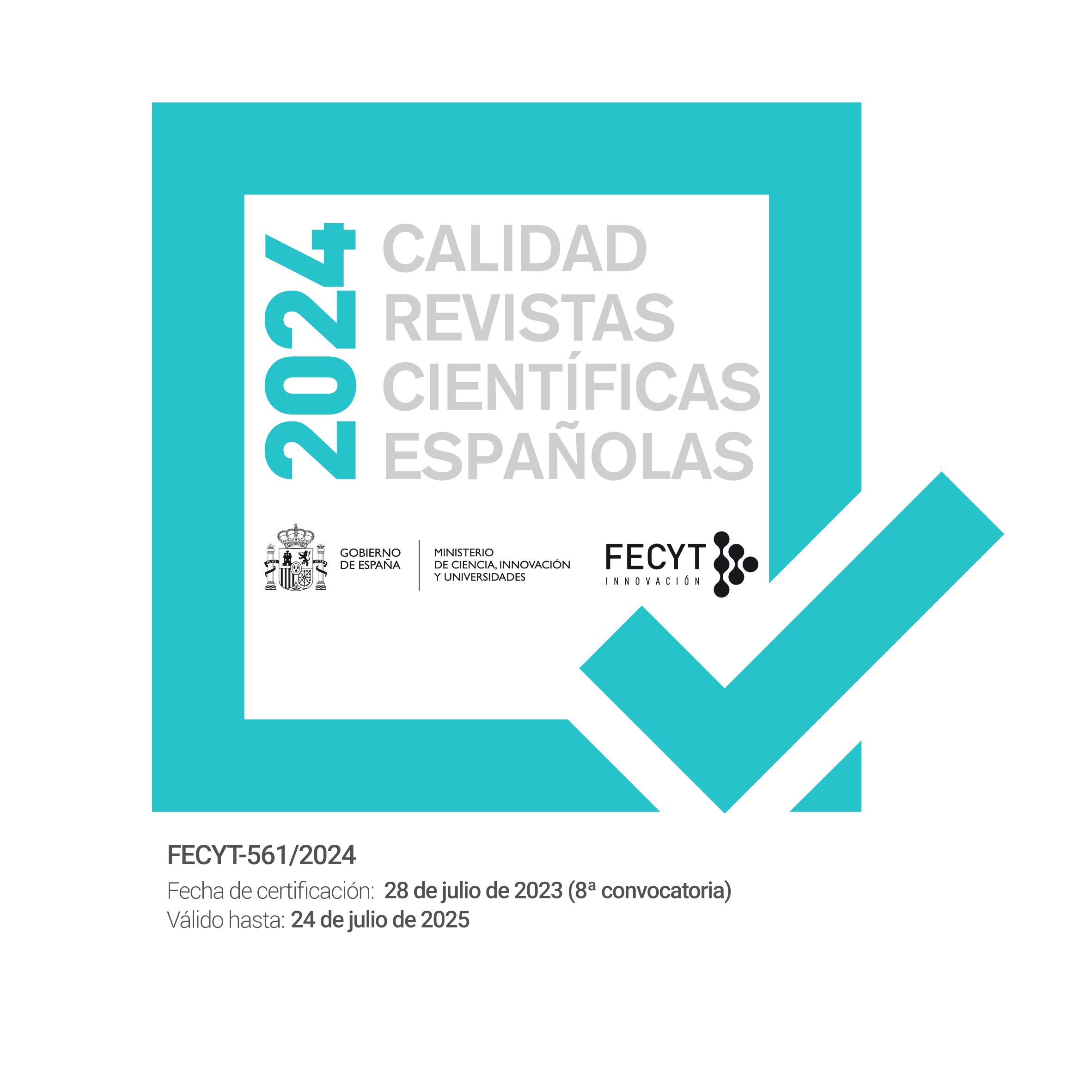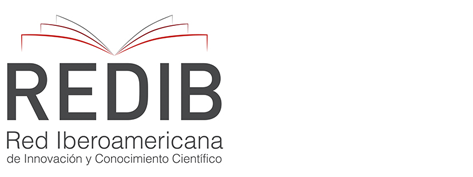Ali Ferzat: De la caricatura comunicativa en papel a la caricatura activista en los medios digitales.
DOI:
https://doi.org/10.12795/Ambitos.2019.i46.07Abstract
Ali Ferzat es uno de los caricaturistas más importantes del mundo árabe. Sus caricaturas empezaron como un acto comunicativo que pretendía reivindicar una serie de derechos que no estaban dentro del mundo árabe contemplados. Así, se convirtieron en una válvula de escape comunicativa que expresaba temas que nadie se atrevía hablar por el temor a las represalias. No obstante, la Primavera Árabe supuso una revolución, ya que permitió que irrumpieran las nuevas tecnologías como medio de comunicación. En este sentido, la caricatura se consolidó como medio debido a que su transmisión fue muy veloz, pero también se convirtió en un arte de resistencia que incitaba al activismo social. Por ello, este trabajo pretende mostrar un análisis de las caricaturas de Ali Ferzat, así como también reflejar esta evolución en el género de la caricatura que ha propiciado que se convierta en un puro acto de activismo social capaz de hacer tambalear al régimen. Con todo, se ha utilizado una metodología cualitativa que permita analizar la evolución de las caricaturas, así como también sun método visual etnográfico que permita describir las caricaturas y mostrar esa evolución significativa. Por tanto, se trata de reflejar como la caricatura se ha consolidado como género comunicativo y medio de comunicación alternativo al entrar en contacto con los medios digitales. Pues, la caricatura es una forma de hacer reaccionar a la sociedad a través del impacto visual, por lo que se convierte en un arte de resistencia idóneo para luchar de forma activa contra el régimen.
Downloads
Metrics
References
AFP (2011). Arab Spring Provides Inspiration to Regional Cartoonists. Al-Arabiya. Consultada el 28 de octubre de 2013, de http://www.alarabiya.net/articles/2011/12/04/180731.html
al-Thawra (n. d.). al-Thawra. Consultada el 15 de marzo de 2019, de http://thawra.sy
Anderson, B. (2005). Comedy. Preface. En ʿA. Farzāt (Ed.) A Pen of Damascus Steel. Political Cartoons of an Arab Master. Seattle: Cune Press
Anónimo (2006). Ali Farzat. Cune Press. Consultada el 15 de junio de 2012, de http://www.cunepress.com/E2003/farzat/timeline.htm
Anónimo (2013, 20 de agosto). A 'pain in the Assad?' Syrian cartoonist speaks out from exile. Al-Arabiya. Consultada el 23 de octubre de 2015, de http://search.proquest.com.ezp- prod1.hul.harvard.edu/docview/1426425079?accountid=11311
Bennett, O. (2012, 10 de marzo). The moral dilemmas of Syria's revolution. BBC. Consultada el 13 de mayo de 2015, de http://www.bbc.com/news/magazine- 17315413
Brianbridge, L. (2013). In place of war: Egypt‘s artists after the Arab Spring. The guardian. Consultada el 24 de Octubre de 2013, de www.theguardian.com/world/2013/may/05/egypt-artists-in-place-of-war-feature
Cardoso, G. (2010). Los medios de comunicación en la sociedad en red: filtros, escaparates y noticas. Barcelona: Editorial UOC.
Carty, V. (2010). New information communication technologies and grassroots mobilization. Information, Communication and Society, 13, pp. 155-173.
Editores (2005). On Titles and Notes. Preface. En ʿA. Farzāt A Pen of Damascus Steel. Political Cartoons of an Arab Master. Seattle: Cune Press.
Eko, L. S. (2012). New Media, Old Regimes. Case Studies in Comparative Communication Law and Policy. Lanham, Maryland: Lexington Books.
El Hasan, J. (2013, 20 de diciembre). Art, revolution and Ali Ferzat. The Daily Star. Consultada el 20 de octubre de 2015, de http://www.dailystar.com.lb/Culture/Art/2013/Dec-20/241845-art-revolution-and-ali- ferzat.ashx
Ferzat, A. (n. d.). Ali Ferzat. Consultada el 09 de marzo de 2019, de http://www.ali-ferzat.com
Ferzat, A. (2005). A Pen of Damascus Steel. Political Cartoons of an Arab Master. Seattle: Cune Press.
Ferzat, A. (2012a). Syrian cartoonist Ali Farzat: 'They broke my hands to stop me drawing Assad' – video. Drawing the Revolution The Guardian. Retrieved October 30th 2013 from http://www.theguardian.com/commentisfree/video/2012/jun/21/drawing-syria- revolution-ali-farzat-video
Ferzat, A. (2012b, 24 de mayo). Fotos de Ali Ferzat. Ali Ferzat. Facebook. Consultada el 21 de marzo de 2019, de https://www.facebook.com/photo.php?fbid=417893638251218&set=a.175684052472179&type=3&theater
Ferzat, A. (2014, 5 de septiembre). Fotos de Ali Ferzat. Ali Ferzat. Facebook. Consultada el 21 de marzo de 2019, de https://www.facebook.com/photo.php?fbid=853421804698397&set=a.175684052472179&type=3&theater
Ferzat, A. (2015a, 19 de enero). Fotos de Ali Ferzat. Ali Ferzat. Facebook. Consultada el 21 de marzo de 2019, de https://www.facebook.com/photo.php?fbid=937638212943422&set=pb.100000917557614.-2207520000.1553250212.&type=3&theater
Ferzat, A. (2015b, 22 de agosto). Fotos de Ali Ferzat. Ali Ferzat. Facebook. Consultada el 21 de marzo de 2019, de https://www.facebook.com/photo.php?fbid=1067179586655950&set=a.175684052472179&type=3&theater
Flores, S. (2018). La Siria de Ali Farzat: la caricatura en el mundo árabe. (Tesis Doctoral Inédita). Sevilla: Universidad de Sevilla.
Halasa, M. (n. d.). Ali Ferzat in his own words. Arab British Centre. Consultada el 10 de junio de 2015, de http://www.arabbritishcentre.org.uk/ali-ferzat-in-his-own-words/
Halasa, M. (2012, junio). Creative dissent. Index on Censorship. Vol. 41 Issue 2, p14- 25.
Halasa, M., Omareen, Z. y Mahfouz, N. (Eds.) (2014). Syria speaks: art and culture from the frontline. Londres: Saqi Books.
Moubayed, S. M. (2006). Steel & Silk: Men & Women Who Shaped Syria 1900- 2000. Cune Press.
Shilton, S. (2013). Art and the Arab Spring: Aesthetics of revolution in contemporary Tunisia. French Cultural Studies, 24 (I), pp. 129-145. Bristol, UK: Sage.
Stoughton, I. (2012, 30 de octubre). Syrian artists make drawings, not bombs. McClatchy - Tribune Business News. Consultada el 20 de noviembre de 2015, de http://search.proquest.com.ezp- prod1.hul.harvard.edu/docview/1115661930?accountid=11311
Sussman, A. (2009, 10 de enero). Drawing the line between editorial and cartooning: The Guardian's Steve Bell and An-Nahar's Armand Homsi discuss the art and science of their trade. The Daily Star. Consultada el 15 de octubre de 2015, de http://www.dailystar.com.lb/Culture/Art/2009/Jan-10/116557-drawing-the-line- between-editorial-and-cartooning.ashx
Syrian Revolution Arts (2012). Facebook. Consultada el 11 de julio de 2014, de https://www.facebook.com/Syrian.Revolution.Arts/timeline
Taleb, B. (2005). Wisdom. Preface. En ʿA. Farzāt A Pen of Damascus Steel. Political Cartoons of an Arab Master. Seatle: Cune Press.
Tishreen (n. d.). Tishreen. Consultada el 18 de marzo de 2019, de http://tishreen.news.sy
Wedeen, L. (1995). The Politics of Spectacle: Discipline, Resistance, and National Community in Syria. Berkeley: University of California.
Wedeen, L. (2013). Ideology and Humor in Dark Times: Notes From Syria. Critical Inquiry. 39. 4. Chicago: The University of Chicago.
Wedeen, L. (2015). Ambiguities of Domination. Politics, Rhetorics, and Symbols in Contemporary Syria. Chicago: The University of Chicago Press.
Downloads
Published
How to Cite
Issue
Section
License
Ámbitos. Revista Internacional de Comunicación is an open access journal, which means that all content is freely available at no charge to the user or their institution. Users may read, download, copy, distribute, distribute, print, search or link to the full text of articles, or use them for any other lawful purpose, without seeking prior permission from the publisher or author. This definition of open access is in accordance with the Budapest Open Access Initiative (BOAI).

Unless otherwise noted, all content in the electronic edition is distributed under a "Creative Commons Attribution-NonCommercial-ShareAlike 4.0 International License". You can consult the informative version and legal text of the licence here. This should be expressly stated in this way where necessary.
In case of acceptance of the manuscript, the authors cede the rights of the work for its publication to Ámbitos. Revista Internacional de Comunicación under the Attribution-NonCommercial-ShareAlike 4.0 International license contract (CC BY-NC-SA 4.0). The authors retain copyright and third parties are authorised to copy, distribute and make use of the work, provided they comply with the terms and conditions set out in the licence
- Cite the authorship and the original source of publication (journal, publisher and URL of the work).
- Do not use them for commercial purposes.
- If you remix, transform or create from the material, you must release your contributions under the same license as the original.
More information can be found at https://creativecommons.org/licenses/by-nc-sa/4.0/deed.es
- Abstract 427
- PDF (Español (España)) 216


















